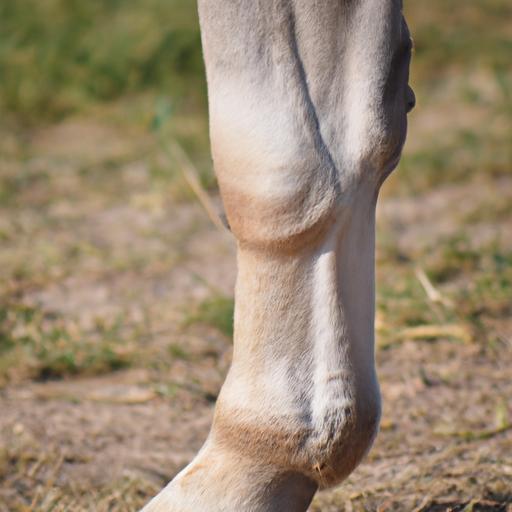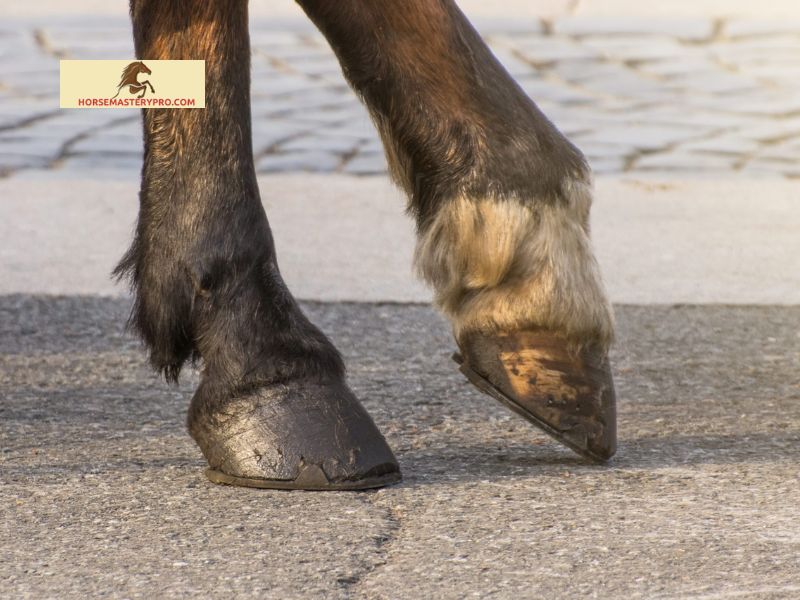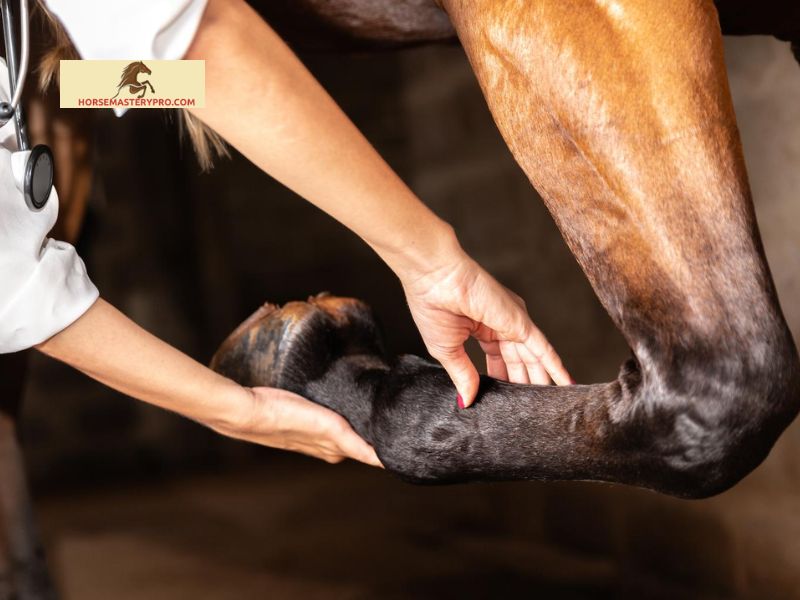Discover effective alternative and complementary treatments for cellulitis in horses. Explore herbal remedies, homeopathy, acupuncture, and cold laser therapy.
Introduction
Do you know cellulitis in horses treatment? Welcome to horsemasterypro.com, where we delve into the world of equine health and well-being. In this article, we will explore the ins and outs of cellulitis in horses and shed light on the crucial aspect of its treatment. If you’re a horse owner or enthusiast, understanding the causes, symptoms, and treatment options for cellulitis is vital for your equine companion’s overall health and happiness.
Definition and Overview
Cellulitis in horses is an inflammatory condition that affects the skin and underlying tissues. It typically occurs when bacteria enter the body through a wound or a break in the skin’s integrity, leading to infection and subsequent inflammation. This condition can be quite distressing for our equine friends, causing pain, swelling, and lameness.
Importance of Early and Effective Treatment
When it comes to cellulitis, time is of the essence. Early intervention is crucial for successful treatment and preventing further complications. Left untreated, cellulitis can progress rapidly, potentially leading to severe tissue damage or even systemic infection. By recognizing the signs early on and seeking appropriate treatment, we can minimize discomfort and aid in a speedy recovery for our beloved horses.
At horsemasterypro.com, we understand the significance of providing comprehensive information to horse owners and enthusiasts. In the following sections, we will delve deeper into the causes, symptoms, and diagnosis of cellulitis in horses. By equipping ourselves with this knowledge, we can better identify the condition and take the necessary steps for effective treatment.
Stay tuned for Section II, where we will explore the various causes and risk factors associated with cellulitis in horses. Remember, your horse’s well-being is our top priority at horsemasterypro.com. Together, let’s navigate the world of cellulitis in horses and ensure our equine companions receive the care they deserve.
Stay connected with horsemasterypro.com for expert insights on cellulitis in horses treatment.
Causes and Risk Factors of Cellulitis in Horses

Primary Causes of Cellulitis in Horses
Cellulitis in horses can have various causes, each contributing to the development of this inflammatory condition. Understanding these primary causes is essential for preventing and managing cellulitis effectively.
1. Wounds and Injuries: One of the most common causes of cellulitis in horses is through wounds or injuries that expose the underlying tissues to bacteria. Even seemingly minor cuts or abrasions can provide an entry point for bacteria, leading to infection and subsequent cellulitis.
2. Puncture Wounds: Horses are prone to puncture wounds, particularly in their lower limbs and hooves. These wounds, often caused by sharp objects like nails or thorns, can introduce bacteria deep into the tissues, increasing the risk of cellulitis.
3. Pre-existing Skin Conditions: Horses with pre-existing skin conditions, such as dermatitis or scratches, are more susceptible to developing cellulitis. These skin conditions compromise the skin barrier, making it easier for bacteria to penetrate and cause infection.
Risk Factors for Cellulitis in Horses
While understanding the primary causes is crucial, certain risk factors make horses more prone to cellulitis. By identifying these risk factors, we can take proactive measures to minimize the likelihood of cellulitis in our equine companions.
1. Age and Immune Function: Younger and older horses with weaker immune systems are more susceptible to infections, including cellulitis. It is vital to provide proper nutrition and veterinary care to support their immune function and reduce the risk of cellulitis.
2. Poor Wound Care: Inadequate wound care can increase the likelihood of infection and subsequent cellulitis. Failing to clean and dress wounds promptly and effectively can allow bacteria to thrive, leading to complications.
3. Stagnant Water and Moist Environments: Horses exposed to stagnant water or continuously wet environments are at higher risk of developing cellulitis. Moisture provides an ideal breeding ground for bacteria, increasing the chances of infection.
By familiarizing ourselves with the causes and risk factors associated with cellulitis in horses, we can take proactive measures to prevent its occurrence. In Section III, we will explore the symptoms and diagnosis of cellulitis, equipping us with the knowledge needed to identify and address this condition effectively.
Continue your journey with horsemasterypro.com as we uncover the signs and diagnosis of cellulitis in horses.
Symptoms and Diagnosis of Cellulitis in Horses

Common Symptoms Exhibited by Horses with Cellulitis
When it comes to identifying cellulitis in horses, recognizing the telltale signs is crucial for prompt intervention. Here are some common symptoms to look out for:
- Swelling and Heat: One of the primary indicators of cellulitis is localized swelling in the affected area. The swelling is often accompanied by heat, indicating inflammation. Keep an eye out for any sudden or abnormal swelling, especially in the legs or other areas prone to injury.
- Pain and Lameness: Horses with cellulitis may experience discomfort and exhibit lameness. They may be reluctant to put weight on the affected limb or show signs of pain when moving. Observe any changes in gait or behavior that could potentially signal the presence of cellulitis.
- Skin Changes: Cellulitis can cause the skin to become red, tender, and warm to the touch. In some cases, the skin may develop a shiny or stretched appearance due to the underlying inflammation. Pay attention to any visible changes in the skin’s texture and coloration.
- Fever and Systemic Signs: In more severe cases, horses with cellulitis may develop a fever and exhibit systemic signs of illness such as loss of appetite, lethargy, and depression. These symptoms indicate that the infection has spread beyond the localized area and requires immediate veterinary attention.
Diagnostic Methods to Confirm Cellulitis in Horses
While recognizing the symptoms is a crucial first step, a proper diagnosis is necessary to confirm cellulitis. Here are some diagnostic methods commonly used by veterinarians:
- Physical Examination: A thorough physical examination helps veterinarians assess the horse’s overall condition and identify the presence of swelling, heat, pain, or skin changes. They will also evaluate the horse’s gait and mobility to determine the extent of lameness.
- Ultrasound or Imaging: In some cases, veterinarians may use ultrasound or imaging techniques to visualize the affected area and assess the underlying tissues. This can aid in confirming the presence of cellulitis and ruling out other potential causes of swelling and inflammation.
- Laboratory Tests: Blood tests may be conducted to check for elevated white blood cell counts, which can indicate an ongoing infection. These tests help veterinarians assess the severity of the condition and determine the most appropriate treatment approach.
Remember, early diagnosis is crucial for effective treatment of cellulitis in horses. If you notice any of the aforementioned symptoms, consult a veterinarian promptly to ensure the best possible outcome for your equine companion.
Stay tuned for Section IV, where we will explore traditional treatment options for cellulitis in horses. At horsemasterypro.com, we’re dedicated to providing you with the expertise you need to ensure your horse’s well-being.
Traditional Treatment Options for Cellulitis in Horses

Conventional Approaches to Treating Cellulitis in Horses
When it comes to managing cellulitis in horses, traditional treatment options play a vital role in combating this condition effectively. Veterinarians employ a combination of approaches tailored to the severity of the infection and the horse’s individual needs. Let’s delve into some of the conventional methods used:
Antibiotics: Fighting the Infection
To combat the bacterial infection associated with cellulitis, veterinarians often prescribe antibiotics. These medications target the specific bacteria causing the infection, helping to eliminate the source of inflammation. Administering antibiotics promptly and following the prescribed dosage is crucial to ensure the best possible outcome for your horse.
Anti-inflammatory Medications: Relieving Pain and Swelling
Managing pain and reducing swelling are essential components of cellulitis treatment. Anti-inflammatory medications, such as non-steroidal anti-inflammatory drugs (NSAIDs), are commonly used to alleviate discomfort and minimize the inflammatory response. By reducing swelling, these medications can facilitate the healing process and improve your horse’s overall comfort.
Wound Care Techniques: Promoting Healing
Proper wound care is integral to the treatment of cellulitis in horses. This involves cleaning the affected area thoroughly and applying appropriate dressings to protect the wound from further contamination. Veterinarians may also recommend the use of topical antiseptics or wound-healing ointments to aid in the recovery process. It is essential to follow your veterinarian’s instructions carefully to ensure optimal wound healing and prevent potential complications.
At horsemasterypro.com, we emphasize the importance of partnering with your veterinarian to determine the most suitable treatment plan for your horse. While traditional approaches form the foundation of cellulitis treatment, it is essential to remember that each horse’s condition may vary. Your veterinarian’s expertise and guidance will help tailor the treatment approach to your horse’s specific needs.
Stay tuned for Section V, where we will explore alternative and complementary treatments for cellulitis in horses. Remember, at horsemasterypro.com, we are dedicated to providing you with comprehensive information to empower you as a horse owner and enthusiast.
Stay connected with horsemasterypro.com for expert insights on cellulitis in horses treatment.
Conclusion: Taking Care of Your Horse’s Cellulitis with horsemasterypro.com
As we conclude our exploration of cellulitis in horses treatment, it is clear that early intervention and effective management are crucial for the well-being of our equine companions. Remember, at horsemasterypro.com, we prioritize your horse’s health and happiness.
Cellulitis in horses can be a challenging condition, but with the right knowledge and treatment approach, we can provide our horses with the care they need. From understanding the causes and risk factors to recognizing the symptoms and implementing traditional treatment options, we’ve covered the essentials.
Furthermore, we’ve delved into alternative and complementary treatments, showcasing the potential benefits of herbal remedies, homeopathy, acupuncture, and cold laser therapy. These additional treatment methods offer holistic approaches that may complement conventional treatments and support your horse’s recovery.
At horsemasterypro.com, we strive to provide reliable and informative content to help you make informed decisions regarding your horse’s well-being. Remember, it is essential to consult with a qualified veterinarian to determine the most appropriate treatment plan for your horse’s specific case of cellulitis.
We hope this article has empowered you with the knowledge to navigate cellulitis in horses treatment. For further insights, expert advice, and useful resources, visit horsemasterypro.com. Together, let’s ensure our equine companions receive the best care possible.
horsemasterypro.com – Your trusted partner in equine health and horsemanship.
Stay connected with horsemasterypro.com for expert insights on cellulitis in horses treatment.


